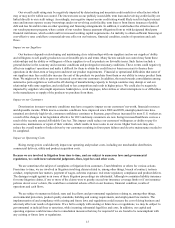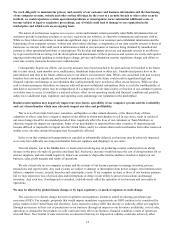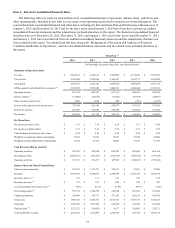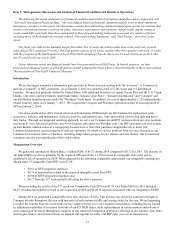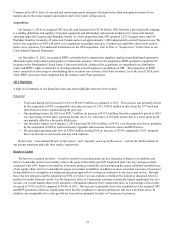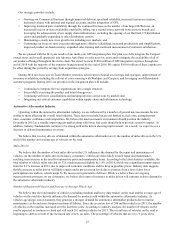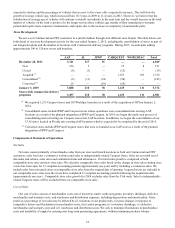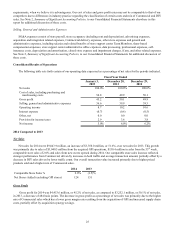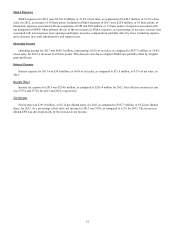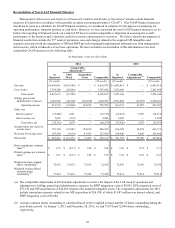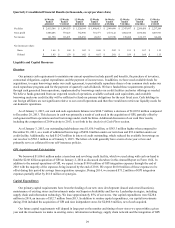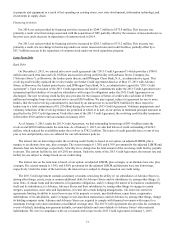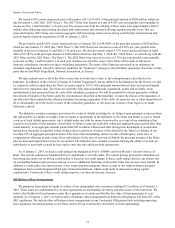Advance Auto Parts 2014 Annual Report Download - page 30
Download and view the complete annual report
Please find page 30 of the 2014 Advance Auto Parts annual report below. You can navigate through the pages in the report by either clicking on the pages listed below, or by using the keyword search tool below to find specific information within the annual report.23
Our strategic priorities include:
• Growing our Commercial business through improved delivery speed and reliability, increased customer retention,
increased volume with national and regional accounts, and the integration of GPI;
• Improving localized parts availability through the continued increase in the number of our larger HUB stores, an
increased focus on in-store availability enabled by rolling out a second source network between store brands and
leveraging the advancement of our supply chain infrastructure, including the opening of our Hartford, CT distribution
center and gradually expanding to other distribution centers;
• Maintaining a steady new store growth rate including new markets; and
• Continuing our focus on store execution through more effective scheduling, increased productivity and simplification,
improved product on-hand accuracy, expanded sales training and continued measurement of customer satisfaction.
We are pleased with the first year results of our multi-year GPI integration plan. Our plan is to fully integrate the Carquest
owned stores and overall operations into Advance Auto Parts over the next few years and to integrate the availability of all of
our product offerings throughout the entire chain. We expect to incur $190.0 million of GPI integration expenses through the
end of 2018 with the majority of the expenses being incurred by the end of 2016. We expect $160.0 million of these expenses to
be offset during this period by savings from acquisition synergies.
During 2014 our focus was on Team Member retention, achievement of initial cost savings and synergies, improvement of
inventory availability, including the roll-out of cross-sourcing with Worldpac and Carquest, and leveraging our differentiated
customer programs. During 2015 our priorities in the integration plan will include:
• Continuing to integrate the two organizations into a single structure;
• Successfully executing the product and brand changeovers;
• Continuing with store consolidations and ramping up store conversions by market; and
• Integrating our critical customer capabilities within supply chain and information technology.
Automotive Aftermarket Industry
Operating within the automotive aftermarket industry, we are influenced by a number of general macroeconomic factors
similar to those affecting the overall retail industry. These factors include, but are not limited to, fuel costs, unemployment
rates, consumer confidence and competition. We believe the macroeconomic environment should position the industry
favorably in 2015 as a steadily improving job market along with lower fuel costs should help to provide a positive impact. In
addition, industry fundamentals continue to be strong with miles driven showing improvement. As a result, we expect to see a
decrease in deferred maintenance over time.
We believe that two key drivers of demand within the automotive aftermarket are (i) the number of miles driven in the U.S.
and (ii) the number and average age of vehicles on the road.
Miles Driven
We believe that the number of total miles driven in the U.S. influences the demand for the repair and maintenance of
vehicles. As the number of miles driven increases, consumers’ vehicles are more likely to need repair and maintenance,
resulting in an increase in the need for automotive parts and maintenance items. According to the latest statistics available, the
total number of vehicle miles traveled on U.S. roads increased slightly by 1.4% in 2014, which was a significant improvement
from the 0.1% increase in 2013, due to improved economic conditions and the drop in gasoline prices. Industry data suggests
that the increase in miles driven will likely remain under pre-recession levels due to pressure from a lower labor force
participation rate and less vehicle usage by the most recent generation of drivers. While we believe there are ongoing
macroeconomic pressures on our consumers, we believe the return of increases in miles driven will continue to drive demand in
the automotive aftermarket industry.
Number of Registered Vehicles and Increase in Average Vehicle Age
We believe that the total number of vehicles (excluding medium and heavy duty trucks) on the road and the average age of
vehicles on the road also heavily influence the demand for products sold within the automotive aftermarket industry. As
vehicles age and go out-of-warranty, they generate a stronger demand for automotive aftermarket products due to routine
maintenance cycles and more frequent mechanical failures. Since the recession low of 248 million vehicles in 2011, the number
of vehicles on the road has increased over the last three years. According to industry analysts, the number of vehicles on the
road is expected to continue to climb and will reach 261 million vehicles by 2017. The overall mix of vehicles on the road is
beginning to shift as a result of the increased rate of new car sales. The percentage of vehicles that are 6 to 11 years old is


